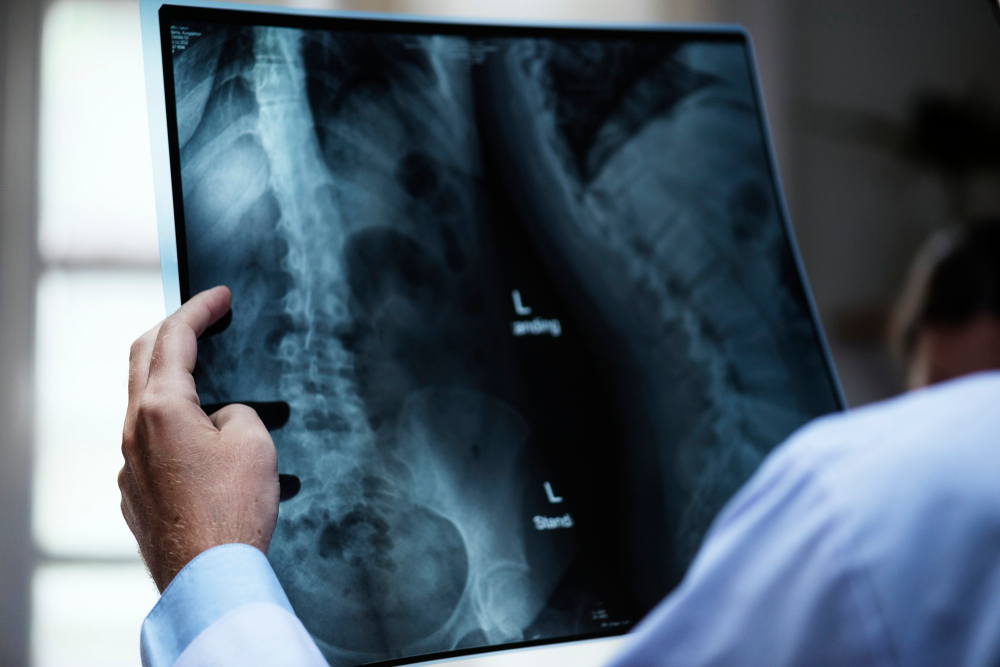
Osteoporosis is a bone condition characterised by a decrease in bone density and strength, leading to fragile bones and an increased risk of fractures.
The Hormonal Connection
The decrease in estrogen levels in women post-menopause and the decrease in testosterone in men as they age are primary hormonal causes of osteoporosis. This hormonal change contributes significantly to bone loss, making bones more prone to fractures.
Estrogen and Testosterone’s Role in Bone Health
Estrogen in women and testosterone in men play a critical role in maintaining bone density. Post-menopause, a woman’s body produces less estrogen, which is essential for maintaining bone mass. As men age, a decline in testosterone levels has a similar effect. Without these essential hormones, the process of bone resorption outpaces bone formation, leading to a decrease in bone density and the onset of osteoporosis.
Insufficient Calcium and Vitamin D
The bones require adequate calcium and Vitamin D for strength and density. A lack of these nutrients in the diet can lead to weakened bones and ultimately osteoporosis.
- Calcium-rich foods: milk, cheese, leafy green vegetables
- Vitamin D sources: sunlight exposure, fortified foods, and supplements
Detailed Insight into Nutritional Deficiencies
Calcium and Vitamin D are essential nutrients for bone health. Calcium contributes to the development and maintenance of bone structure and strength, while Vitamin D aids in the absorption of calcium from the gastrointestinal tract. A diet deficient in these nutrients can result in weakened bone structure and an increase in bone loss, resulting in fragile bones that are prone to fractures. It’s imperative to include sources like leafy greens, dairy products, fish, and fortified foods to meet the dietary requirements of these essential nutrients.
Role of Other Micronutrients
Other micronutrients like magnesium, phosphorus, and Vitamin K also play a vital role in maintaining bone health. Adequate dietary intake of these micronutrients is essential in preventing bone-related disorders, including osteoporosis.
Impact of Lifestyle Factors
Lifestyle factors such as smoking and excessive alcohol consumption negatively affect bone health. Smoking hinders the body’s ability to absorb calcium, leading to lower bone mass and weaker bones. Excessive alcohol interferes with the balance of calcium in the body and affects the production of hormones, which protect the bones, and of vitamins, which the body needs to absorb calcium.
Physical Inactivity
Physical inactivity or lack of exercise also contributes to bone loss and osteoporosis. Weight-bearing exercises and strength training are essential for maintaining bone density and strength. Engaging in regular physical activities, such as walking, dancing, and weight lifting, helps stimulate bone formation and improve bone density.
Impact of Medications and Other Health Conditions
Certain medications, like corticosteroids, which are commonly used to treat inflammatory diseases, have side effects that include bone loss, leading to osteoporosis over extended use. Other medical conditions, such as rheumatoid arthritis, also increase the risk of osteoporosis.
Understanding these aspects in depth provides a clearer and more comprehensive insight into the causes of osteoporosis, helping in creating effective prevention and management strategies.
Additional Risk Factors
Lifestyle Factors
Several lifestyle factors can also contribute to the development of osteoporosis:
- Excessive alcohol consumption
- Smoking
- Lack of physical activity
Medications and Other Conditions
Long-term use of certain medications, such as corticosteroids, and medical conditions, like rheumatoid arthritis and other autoimmune diseases, can lead to osteoporosis.
“Knowing the causes is the first step to prevention and management of osteoporosis.”
Prevention and Management
Preventive measures and management strategies include maintaining a healthy diet rich in calcium and Vitamin D, engaging in weight-bearing exercises, avoiding excessive alcohol and tobacco use, and regular bone density testing.
Conclusion
In conclusion, understanding the causes of osteoporosis, including hormonal changes, insufficient nutrient intake, certain lifestyle factors, and long-term medication use, is vital for effective prevention and management. Staying informed and making proactive health choices can help mitigate the risk of this debilitating condition.
Article by Dr. Naveen Bhadauria



